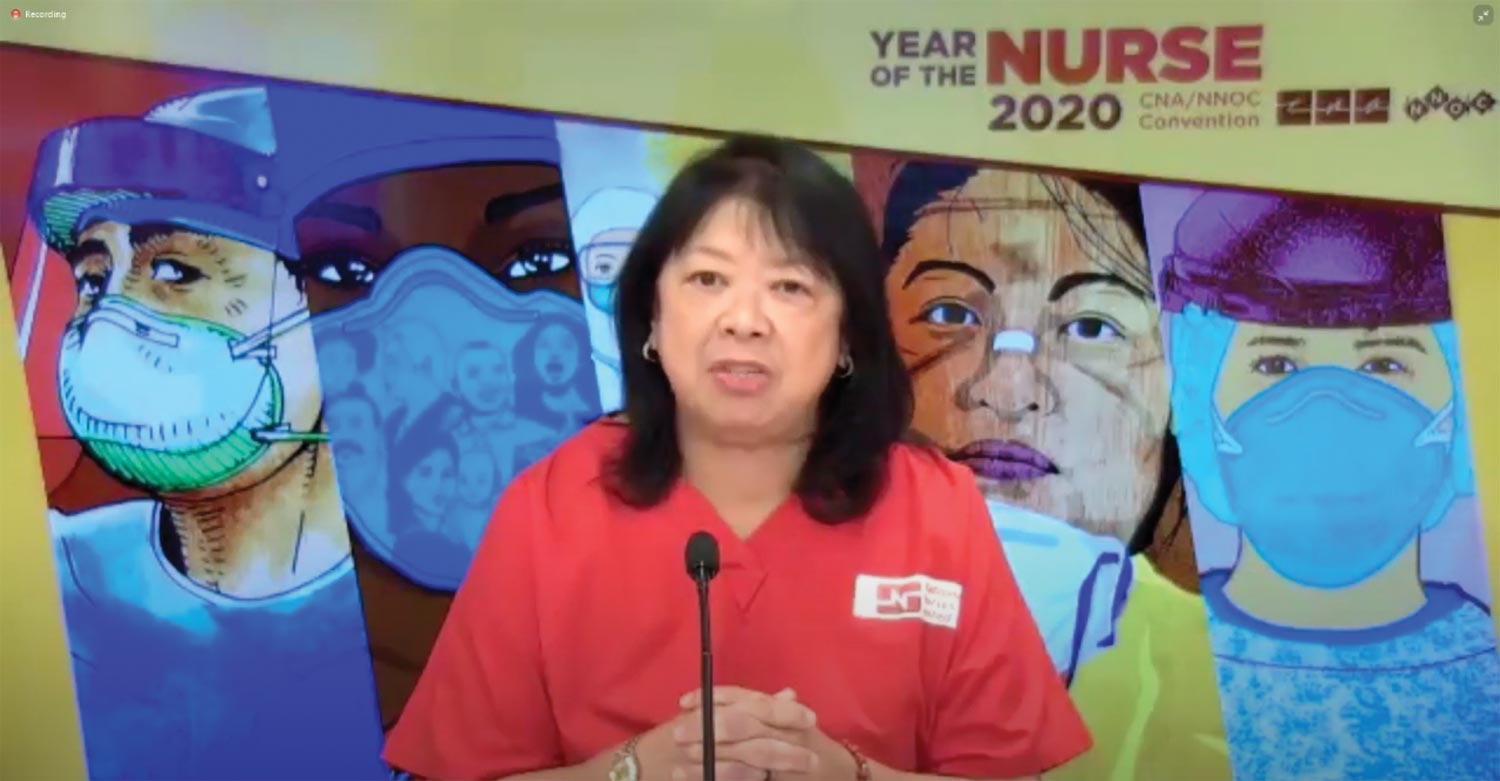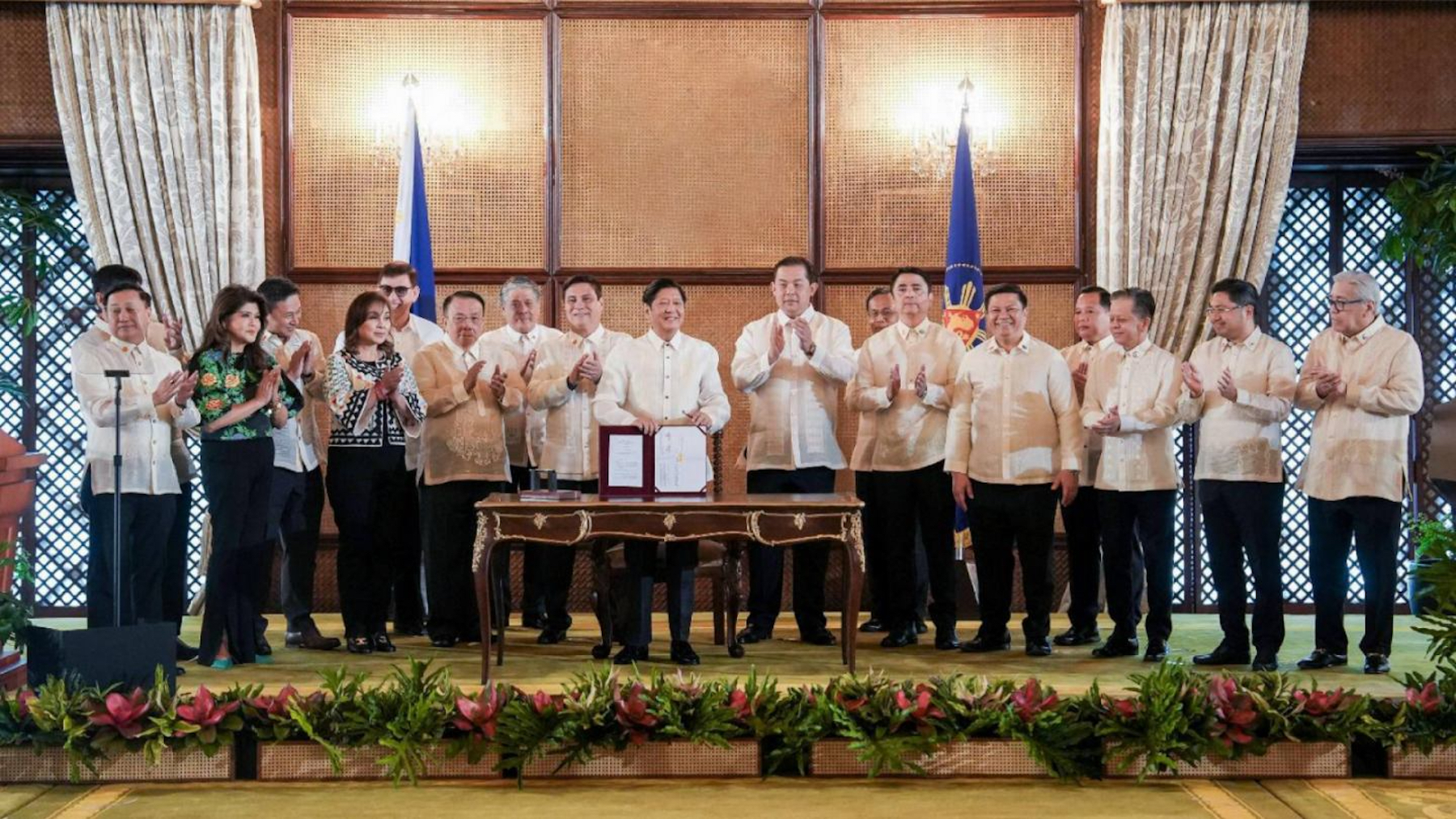
Looking back at the history of racism, resilience and activism in the rich community of Fil-Am nurses
IF you’ve ever been to a hospital or were treated in a hospital in the U.S., the chance that a Filipino nurse treated you is high, to say the least.
It’s a stereotype and a joke that, indeed, reflects reality: nearly every hospital wing in America is flowing with Filipino nurses, doctors, caregivers and technicians.
It’s no question that Filipinos are abundantly influential in the overall registered nursing workforce, which nearly everybody can agree is among the most essential workforces in this country, whether we’re in a pandemic or otherwise.
But the COVID-19 undoubtedly complicated life for Filipino nurses, who were disproportionately affected by the government’s failed response to the crisis, signaling the need for union organizing and a clear plan to protect the most vulnerable health care workers.
To celebrate this year’s Filipino American History Month — which is themed around social justice — the California Nurses Association (CNA)/National Nurses United (NNU) hosted a special webinar on Thursday, Oct. 29 saluting the tireless (and often thankless) work of the countless Filipino registered nurses in the U.S.
“The history of Filipino nurses is made up of millions of personal stories about our dedication to our families, our patients and our profession,” CNA board member and RN Dahlia Taglay said on Thursday.
“It’s about how our experience has been shaped by imperialism, capitalism and racism but it is also a story about solidarity and what we can achieve through collective action,” added Taglay who has been an RN for more than 40 years.
Hospital nurses, especially those working in ICUs, were given a spotlight this year when the greater public reignited its value in the RN workforce during the peaks of the COVID-19 pandemic. As of Aug. 24, at least 193 RNs in the U.S. have died of COVID-19-related issues and 30% of those who passed were Filipino, the NNU reported.
The Filipino American nursing workforce has played a crucial role in American health care since the mid- to late-20th century when nurses from the Philippines migrated to the United States to supply staff shortages in American hospitals.
To any Filipino or anybody who knows Filipinos, it’s no surprise that Filipinos are among the most trusted group of health care workers. Hospitality and genuine, selfless care are seemingly inherent characteristics in most Filipinos.
Today, Filipinos comprise 4% (about 150,000) of the overall nursing community in the U.S. according to the NNU, but regions with a higher concentration of Filipinos employ a much larger share. ProPublica found that 1 in 4 Filipinos in the New York tri-state area are health care workers, and “they are four times more likely to be nurses,” according to a Business Insider report.
In California, Filipinos cover 18% of RNs across the state.
But as such ethnic minorities in nearly every industry, Filipino nurses were not warmly welcome and many faced discrimination and racism socially and financially. Many Filipinos who fled the motherland due to the unrest of the Marcos regime settled in the U.S., but were rudely awakened to the racism that many minorities faced in 1970s America.
Famously, two Filipina nurses named Filipina Narciso and Leonora Perez were falsely accused and charged of murdering 10 patients at the Ann Arbor, Michigan Veterans Administration Hospital in 1975. The two nurses were only found guilty on poisoning and conspiracy charges, the prosecution’s case was scant and colored by xenophobic and racist rhetoric.
A lead witness for the prosecution in that case referred to the two nurses as “slant-eyed b*tches” and claimed of a bogus conspiracy by Filipino nurses to murder patients in the United States.
“Filipino nurses are no stranger to racism. They deal with institutional discrimination along with workplace prejudice and harassment from managers, co-workers and employers,” said the narrator of a documentary by Filipina American filmmaker Marissa Roy called “The Strength of Many,” which was produced by NNU.
The decades of discrimination — which also included Filipinos being turned away from nursing positions because hospitals had “too many Filipinos” — led the formidable force of Filipino nurses to organize and fight for equal rights for all nurses.
The COVID-19 pandemic’s detrimental impact on health care workers have left 70% of Filipino nurses in California reporting “difficulties [in] affording housing, food and other necessities,” said Zenei Triunfo-Cortez, a registered nurse and member of the Council of Presidents of NNU, the largest union and professional organization of RNs in the U.S.
Throughout the pandemic, Triunfo-Cortez — who is the first Filipina president of the NNU — and other prominent Filipina RNs led boycotts and demonstrations demanding adequate personal protective equipment (PPE) and safer working conditions for nurses.
Though nonpartisan by nature, nurses unions have been striking against the president’s response to the pandemic, specifically, citing his dangerous rhetoric that includes racist misnomers and “scapegoating immigrants” and China.
“President Trump has tried to avoid responsibility for his disastrous pandemic response by blaming China and scapegoating immigrants, which has led to a rise in anti-Asian racism here, including against Filipino nurses and health care workers,” Triunfo-Cortez said.
In order to maintain a forceful community of RNs, Triunfo-Cortez encouraged all nurses to organize and get involved in unions. Although the NNU comprises 150,000 members nationwide, there are nurses throughout the country — especially immigrant nurses — who may be undergoing dangerous working conditions as they treat COVID-19 patients.
“We understand the importance of solidarity and putting the welfare of the group over the individual, and that’s why it’s easy for us to see that there is power in a union,” Triunfo-Cortez said. “So, let’s get together as nurses and trade unions and keep fighting until we get the protections we need to keep ourselves and patients safe because none of us is safe until all of us are safe.”






